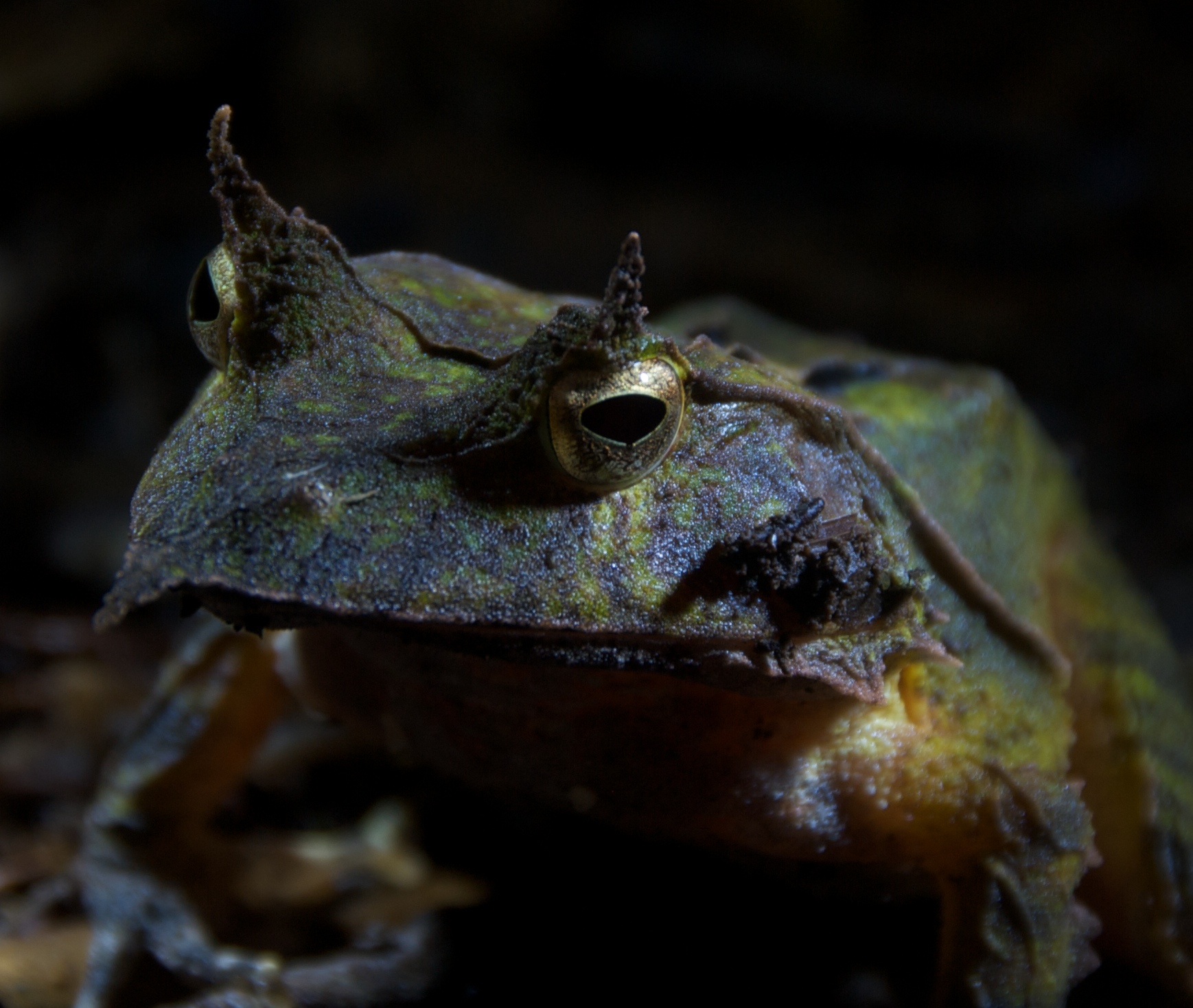A Funky Frog from an Island Paradise

This Research in Action article was provided to LiveScience in partnership with the National Science Foundation.
As dusk falls over the Solomon Islands, a cacophony of quacks rises from the forest floor. The noise originates from the small Solomon's Horned Frog, an amphibian unique to the islands.
"This strange chorus dominates the early evening sounds in the forest," says Christopher Filardi, director of Pacific Programs at the Center for Biodiversity and Conservation at the American Museum of Natural History. Filardi and his graduate student Patrick Pikacha found this particular frog at the biodiversity reserve on Kolombangara Island in the Solomon Islands, where Filardi, an evolutionary biologist, studies bird speciation and biodiversity.
"The Kolombangara biodiversity reserve is the largest protected area in region," says Filardi, adding that the reserve is "stewarded by the people who have lived there for hundreds of generations."
The reserve's protected status provides a home for animals like the colorful horned frog, which also appears in variations of white, purple and brown, in addition to the green pictured. Little is known about why they have these colors or even how they reproduce, but what is known about the elusive species is intriguing.
They belong to a group of platymantine frogs found all over the Solomon Islands. Patymantine frogs are among only a handful of amphibians that grow directly from egg to frog — with no tadpole step in between.
How these frogs, and the other wildlife within the reserve, interact and evolve allows researchers to examine "how the interplay between life history, ecology and geography influences the generation and maintenance of biodiversity and the origins of new life," says Filardi.
Get the world’s most fascinating discoveries delivered straight to your inbox.
Filardi whose research is partly funded by the National Science Foundation has recently written a blog about his research in the Solomon Islands for The New York Times “Scientist at Work.” You can view a video on Filardi’s research here.
Any opinions, findings, and conclusions or recommendations expressed in this material are those of the author and do not necessarily reflect the views of the National Science Foundation. See the Research in Action archive.



